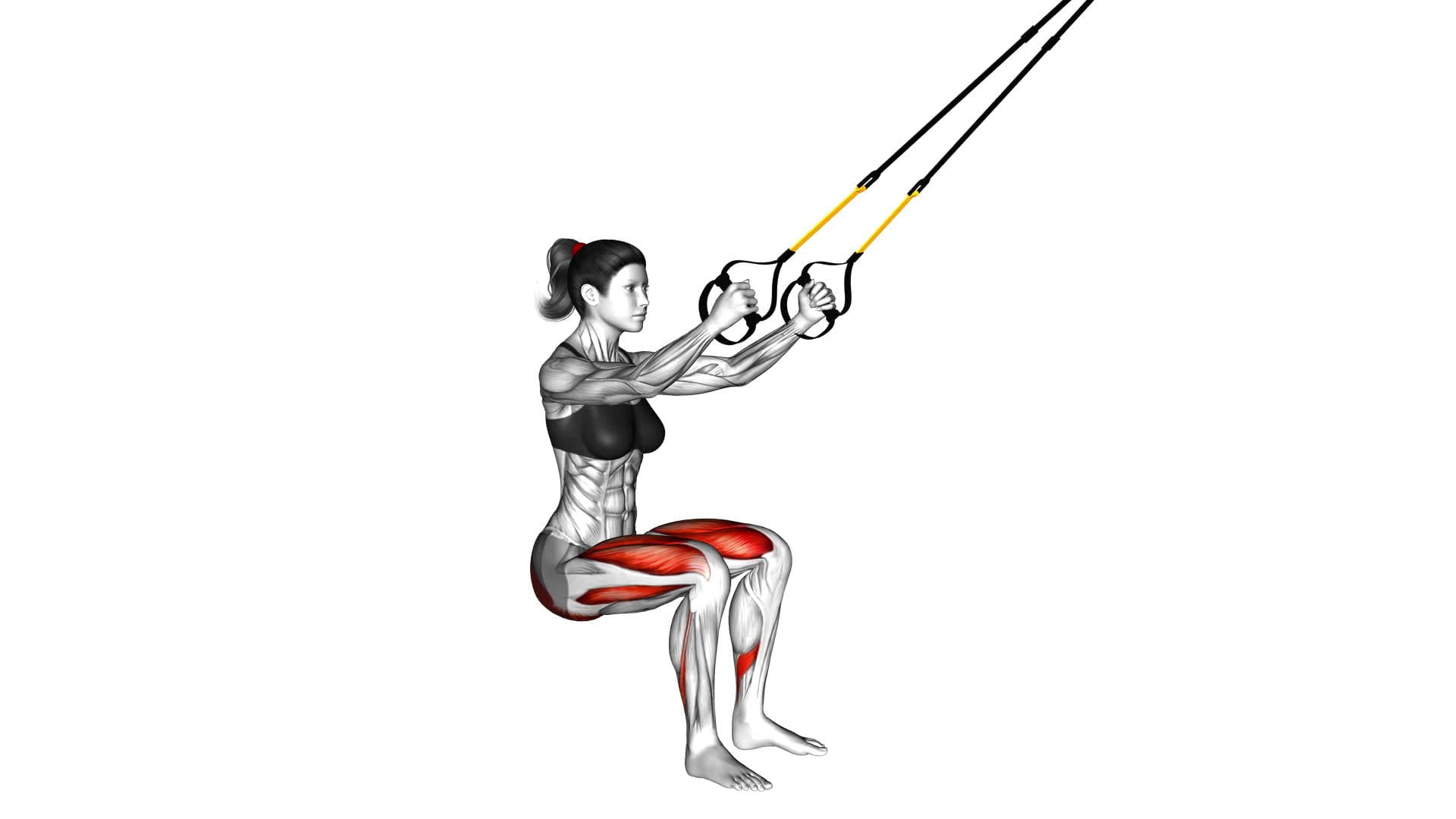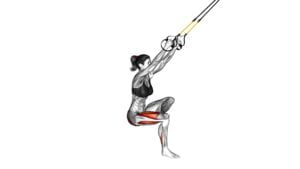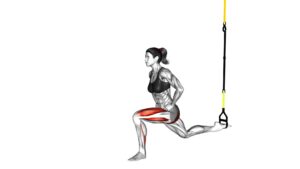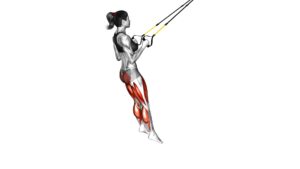Suspender Squat (female) – Video Exercise Guide & Tips

Get ready to tone and strengthen your muscles with the Suspender Squat! In this video exercise guide, you'll find expert tips and techniques specifically designed for females.
Watch This Exercise Video
Learn how to perform the squat with proper form, avoid common mistakes, and modify the exercise to fit your fitness level.
Discover variations that will challenge your muscles and get valuable tips on incorporating the Suspender Squat into your workout routine.
Let's get started and achieve your fitness goals together!
Key Takeaways
- Activates multiple muscle groups simultaneously
- Engages core muscles for better posture and stability
- Maintains stability and minimizes the risk of injury
- Provides a challenging lower body workout
Benefits of the Suspender Squat
By incorporating the Suspender Squat into your workout routine, you can experience a multitude of benefits that contribute to overall strength and stability. One of the key health benefits of the Suspender Squat is its ability to activate multiple muscle groups simultaneously. This exercise primarily targets the quadriceps, hamstrings, glutes, and calves, making it an excellent choice for lower body strength and toning. Additionally, the core muscles, including the abdominals and lower back, are actively engaged throughout the movement, promoting better posture and stability.
Muscle activation is a crucial aspect of any effective workout, and the Suspender Squat delivers in this regard. As you lower into the squat position, your quadriceps and glutes work together to control the descent and provide the necessary strength to power back up. The hamstrings and calves assist in stabilizing the movement and aiding in the upward push. By consistently incorporating the Suspender Squat into your routine, you can develop stronger, more defined leg muscles and improve overall lower body strength.
Moreover, the activation of multiple muscles during the Suspender Squat leads to increased calorie burn. This exercise not only helps in building lean muscle mass but also contributes to weight loss and improved body composition. The more muscles you engage, the more energy your body requires, resulting in a higher metabolic rate both during and after the workout.
Proper Form and Technique
To perform the Suspender Squat with proper form and technique, it's crucial to engage your core muscles throughout the exercise. This helps stabilize your body and maintain proper alignment, reducing the risk of injury.
Pay attention to your posture, keeping your back straight, knees aligned with your toes, and hips squared.
Focus on maintaining a controlled and steady movement, avoiding any jerking or sudden motions.
Core Engagement During Squats
Engage your core for proper form and technique during squats. Core engagement is crucial for maintaining stability and maximizing muscle activation during this exercise.
When you engage your core, you're activating the muscles in your abdomen, lower back, and pelvis, which helps to stabilize your spine and maintain a neutral posture. This stability is essential for performing squats correctly and avoiding injury.
To engage your core, imagine pulling your belly button towards your spine and bracing your abdominal muscles. This will create a strong and stable foundation for your squatting movement.
Importance of Proper Alignment
Maintain proper alignment for optimal form and technique during squats, ensuring stability and minimizing the risk of injury. Proper alignment is crucial when performing squats as it provides a solid foundation for the exercise and allows for maximum engagement of the targeted muscles.
Here are some alignment benefits and proper technique modifications to keep in mind:
- Spine alignment: Keep your spine in a neutral position throughout the squat, avoiding excessive rounding or arching. This helps distribute the load evenly and reduces strain on the lower back.
- Knee alignment: Ensure your knees are tracking over your toes, not collapsing inward or splaying outward. This promotes proper tracking and stability, preventing knee injuries.
- Foot alignment: Keep your feet hip-width apart and parallel, with the weight distributed evenly across the entire foot. This helps maintain balance and stability during the squat.
Maintaining proper alignment not only enhances the effectiveness of the exercise but also reduces the risk of injury.
Now, let's explore common mistakes to avoid when performing squats.
Common Mistakes to Avoid
Avoid rounding your back during the Suspender Squat exercise. One of the most common mistakes people make when performing this exercise is allowing their back to round. This not only compromises the effectiveness of the exercise but also puts unnecessary strain on your spine.
Maintaining proper form is crucial for getting the most out of your Suspender Squat and preventing injuries. To avoid rounding your back, start by standing with your feet shoulder-width apart and your knees slightly bent. Engage your core and keep your spine in a neutral position throughout the movement.
As you lower into the squat, make sure to keep your chest up and your shoulders back. Avoid the temptation to lean forward or let your upper body collapse. Focus on keeping your weight centered and distributing it evenly between your heels and the balls of your feet.
It can be helpful to imagine that you're sitting back into an invisible chair, keeping your back straight and your chest lifted. This will help you maintain proper alignment and engage the correct muscles.
Modifications for Different Fitness Levels
To accommodate various fitness levels, you can modify the Suspender Squat exercise by adjusting the depth of your squat. Here are some modifications you can make based on your fitness level:
- Beginner modifications:
- Start with a partial squat: If you're new to squats or have limited lower body strength, you can begin by performing a partial squat. This means you only lower yourself halfway down, keeping your knees at a comfortable angle.
- Use a support: If you struggle with balance or stability, you can hold onto a sturdy object like a chair or countertop while performing the squat. This will help you maintain proper form and prevent any falls or injuries.
- Decrease range of motion: If you find it challenging to squat all the way down, you can decrease the range of motion by only lowering yourself to a comfortable depth. Gradually increase the depth as you get stronger.
- Advanced modifications:
- Increase squat depth: As you progress and build strength, you can gradually increase the depth of your squat. This will engage your muscles more intensely and provide a greater challenge.
- Add weights: To further challenge yourself, you can hold dumbbells or kettlebells while performing the squat. This will increase the resistance and help build muscle.
- Plyometric squats: For an advanced modification, you can incorporate explosive movements into your squat. Try adding a jump at the end of each squat to increase power and improve athletic performance.
Remember to listen to your body and choose modifications that are appropriate for your fitness level.
Variations to Challenge Your Muscles
Looking to challenge your muscles during the Suspender Squat exercise? There are several advanced progressions and equipment options you can incorporate to take your workout to the next level.
One way to challenge your muscles is by adding resistance. You can use dumbbells or a barbell to increase the load on your muscles, making them work harder. Start with a weight that's challenging but manageable and gradually increase as you get stronger.
Another variation to challenge your muscles is by performing single-leg suspender squats. This variation requires more stability and strength as you're working one leg at a time. To make it even more challenging, you can add a jump at the end of each squat. This explosive movement will engage your muscles even more and increase the intensity of the exercise.
Additionally, you can try using a stability ball or a Bosu ball to add an element of instability to your squats. This will require your muscles to work harder to maintain balance, resulting in a more challenging workout.
Remember to always listen to your body and adjust the intensity and difficulty of the variations based on your fitness level and goals.
Tips for Incorporating the Suspender Squat Into Your Workout Routine
To incorporate the Suspender Squat into your workout routine, consider these tips for optimal results and muscle engagement:
- Start with the basic Suspender Squat: Begin by mastering the standard Suspender Squat before moving on to advanced variations. This will ensure proper form and technique, reducing the risk of injury.
- Gradually increase resistance: As you become more comfortable with the exercise, try adding resistance to intensify the workout. You can do this by holding dumbbells or a kettlebell while performing the squat. This will challenge your muscles and promote strength and growth.
- Explore suspender squat modifications: Once you have mastered the basic Suspender Squat, you can experiment with different modifications to target specific muscle groups. For example, you can try a wide-legged squat to engage your inner thighs or a narrow-legged squat to focus on your quads. These modifications will add variety to your routine and help prevent plateaus.
Incorporating the Suspender Squat into your workout routine can provide a challenging and effective lower body workout. By following these tips and exploring advanced squat variations, you can maximize your results and continue to progress in your fitness journey.
Frequently Asked Questions
Can the Suspender Squat Help Improve Posture?
The suspender squat can definitely help improve your posture. By incorporating this exercise into your routine, you can work on improving alignment and strengthening your core muscles.
The suspender squat targets the muscles in your legs and glutes, which are essential for maintaining good posture. Additionally, this exercise can also help improve overall balance and stability.
How Many Calories Can Be Burned During a Suspender Squat Workout?
During a suspender squat workout, you can burn a significant amount of calories. This exercise is great for your overall fitness and can help you achieve your weight loss goals.
By engaging multiple muscle groups, such as your glutes, quads, and core, the suspender squat provides a challenging and effective workout.
To maximize calorie burn, make sure to maintain proper form throughout the exercise. Keep your chest up, back straight, and knees aligned with your toes.
Are There Any Specific Breathing Techniques to Follow During a Suspender Squat?
During a suspender squat, it's important to focus on your breathing techniques to enhance your form and technique. By inhaling deeply through your nose as you lower into the squat, you allow oxygen to fill your lungs and provide energy to your muscles.
Then, exhale through your mouth as you push up from the squat, engaging your core and maintaining stability. These specific breathing techniques can help you optimize your workout and achieve the best results.
Can the Suspender Squat Be Done With Weights for Added Resistance?
Yes, you can definitely add weights to the suspender squat to increase resistance and challenge your muscles even more. This can be a great way to improve stability and strength in your lower body.
Is It Necessary to Wear Suspenders While Performing the Suspender Squat?
No, it isn't necessary to wear suspenders while performing the suspender squat.
The suspender squat is a lower body exercise that targets your glutes, quads, and hamstrings.
The proper form for this exercise involves standing with your feet shoulder-width apart, bending your knees, and lowering your hips as if you were sitting back into a chair.
You can perform the suspender squat without wearing suspenders, but if you prefer added resistance, you can use weights like dumbbells or a barbell.
Conclusion
Incorporating the suspender squat into your workout routine can provide numerous benefits, such as strengthening your lower body muscles and improving balance and stability.
By following the proper form and technique, you can avoid common mistakes and ensure maximum effectiveness of the exercise.
Additionally, there are modifications and variations available to suit different fitness levels and challenge your muscles.
So, give the suspender squat a try and elevate your fitness routine to new heights.

Author
Years ago, the spark of my life’s passion ignited in my mind the moment I stepped into the local gym for the first time. The inaugural bead of perspiration, the initial endeavor, the very first surge of endorphins, and a sense of pride that washed over me post-workout marked the beginning of my deep-seated interest in strength sports, fitness, and sports nutrition. This very curiosity blossomed rapidly into a profound fascination, propelling me to earn a Master’s degree in Physical Education from the Academy of Physical Education in Krakow, followed by a Sports Manager diploma from the Jagiellonian University. My journey of growth led me to gain more specialized qualifications, such as being a certified personal trainer with a focus on sports dietetics, a lifeguard, and an instructor for wellness and corrective gymnastics. Theoretical knowledge paired seamlessly with practical experience, reinforcing my belief that the transformation of individuals under my guidance was also a reflection of my personal growth. This belief holds true even today. Each day, I strive to push the boundaries and explore new realms. These realms gently elevate me to greater heights. The unique combination of passion for my field and the continuous quest for growth fuels my drive to break new ground.



